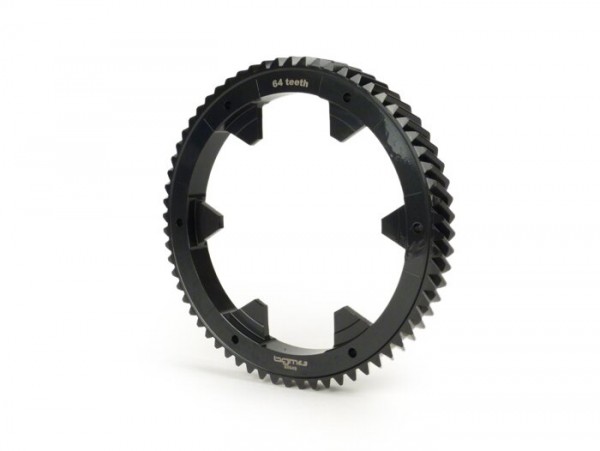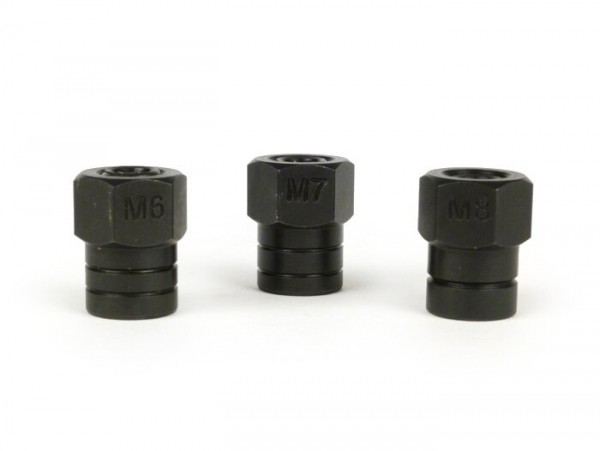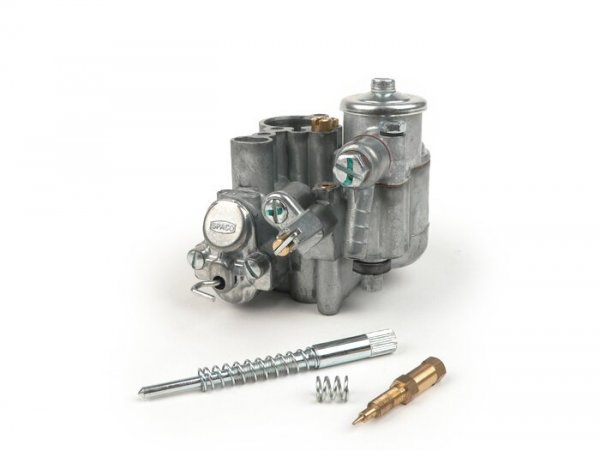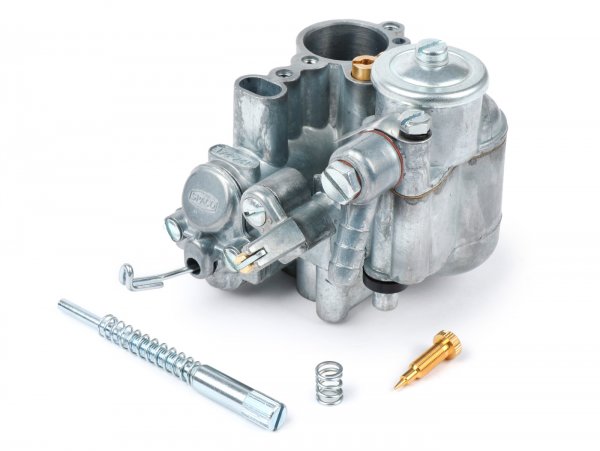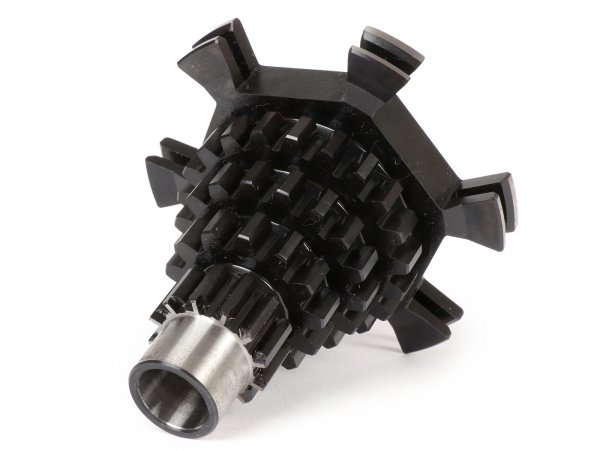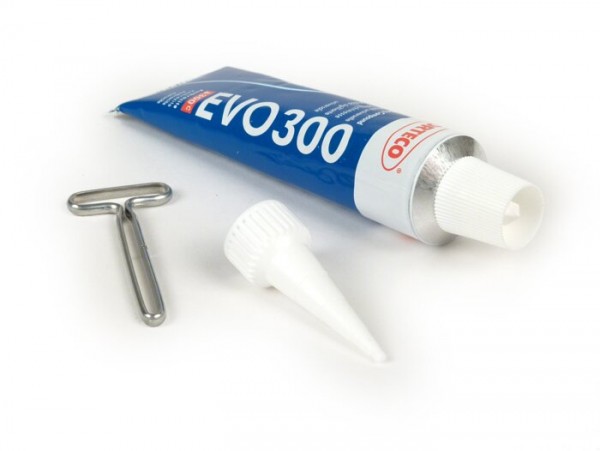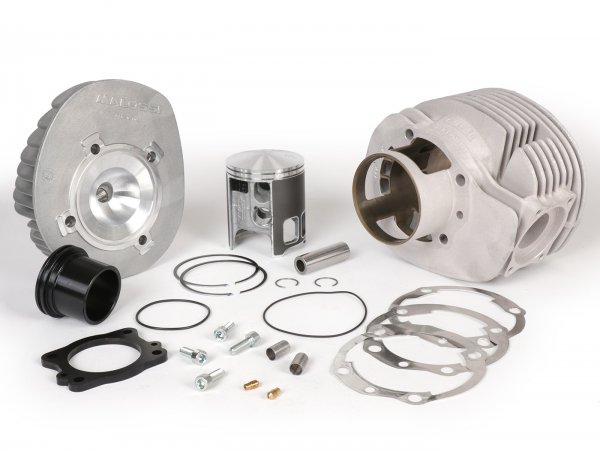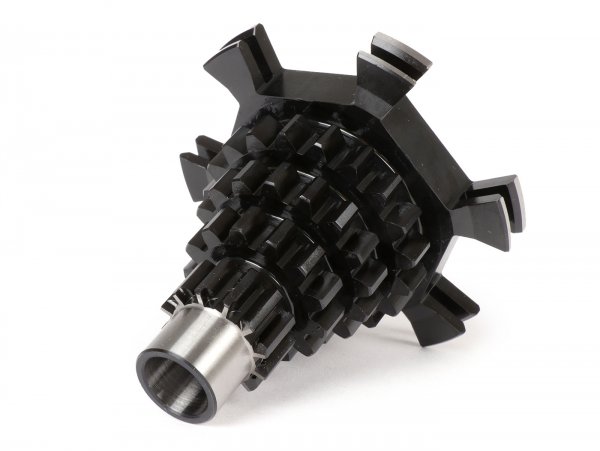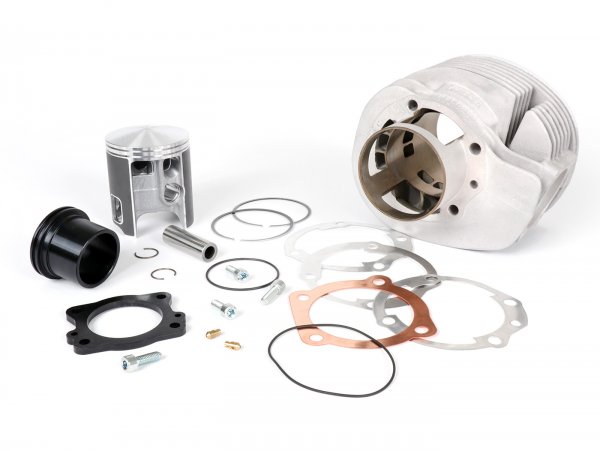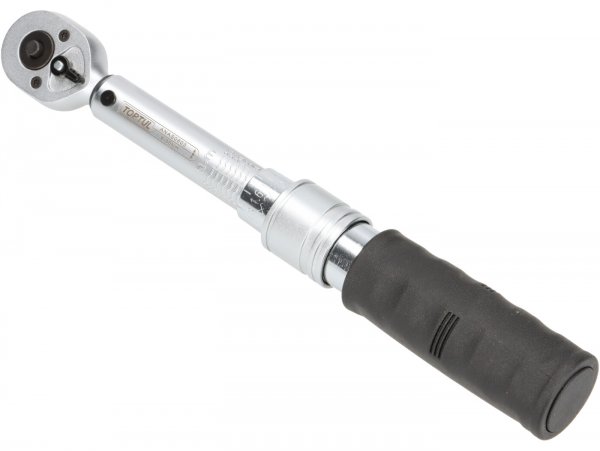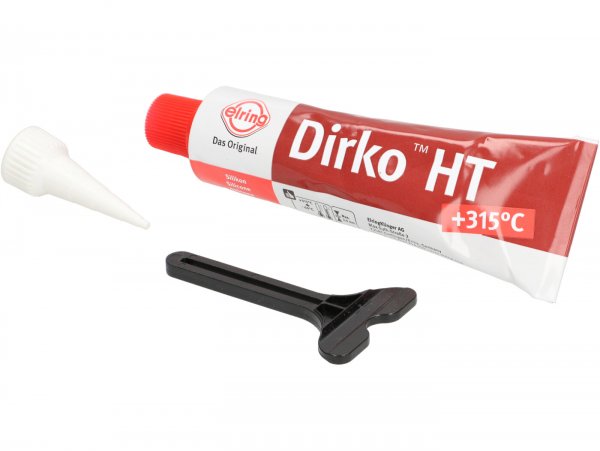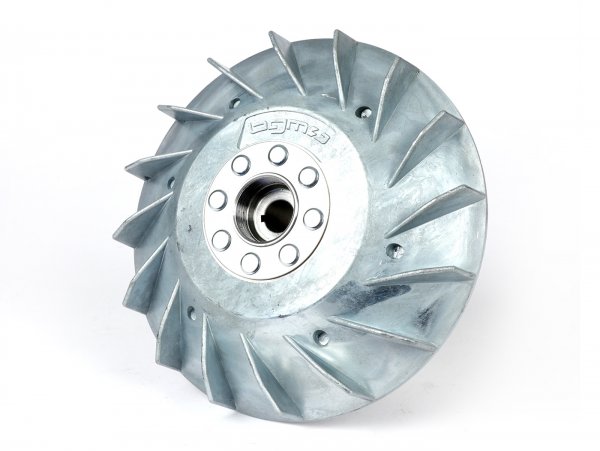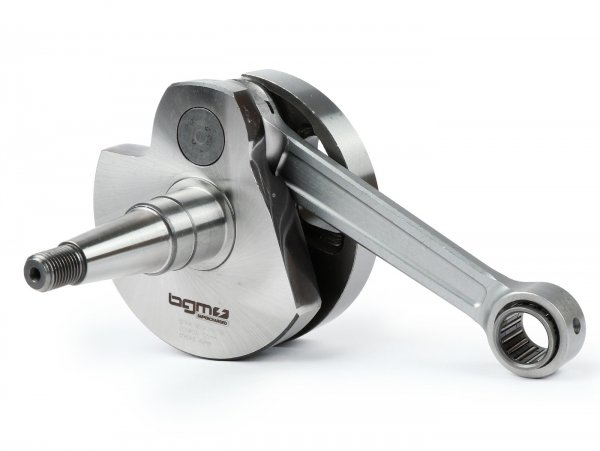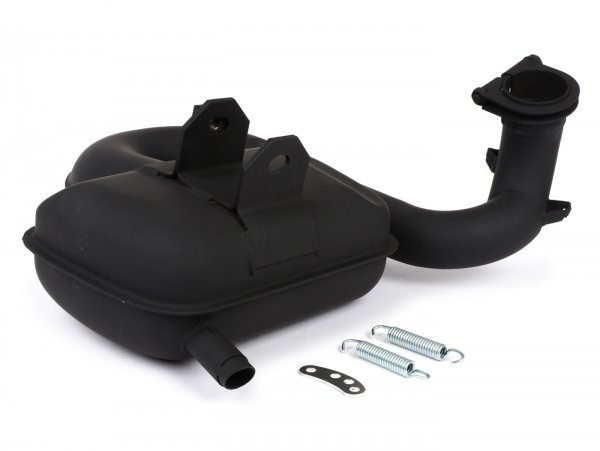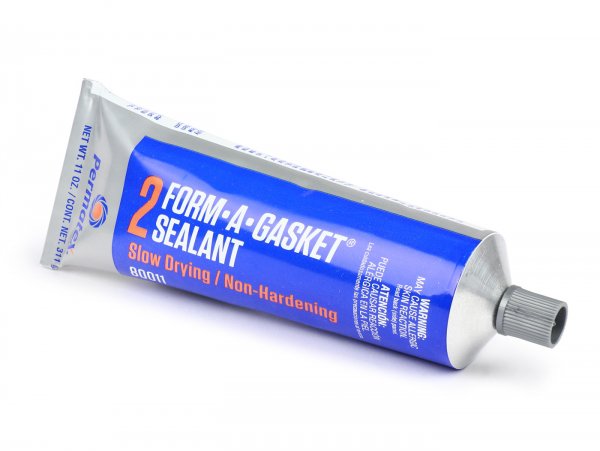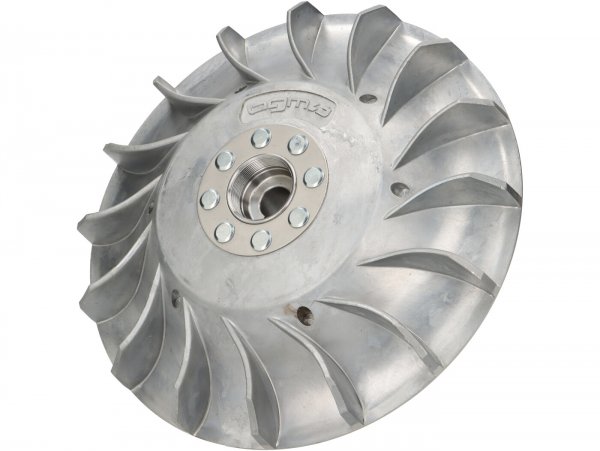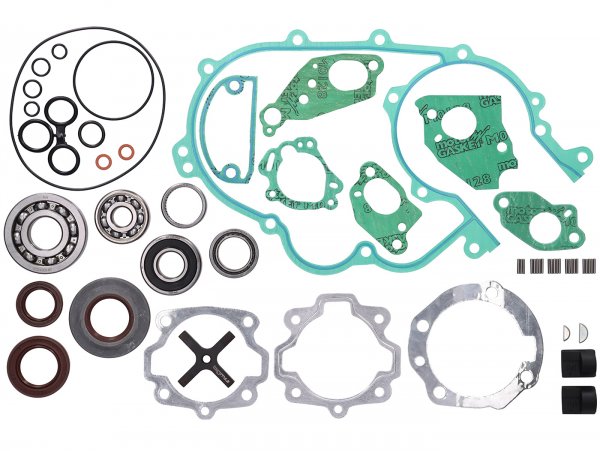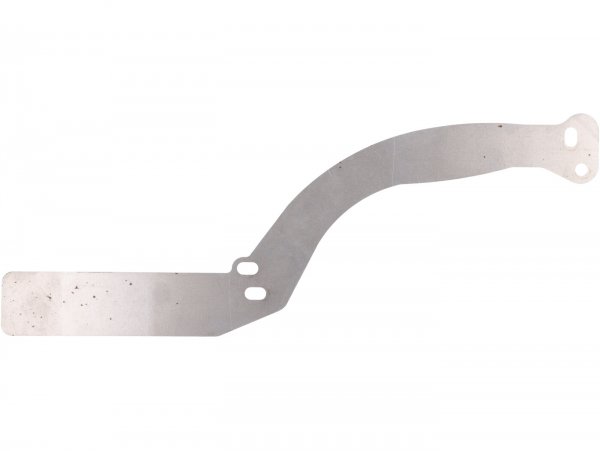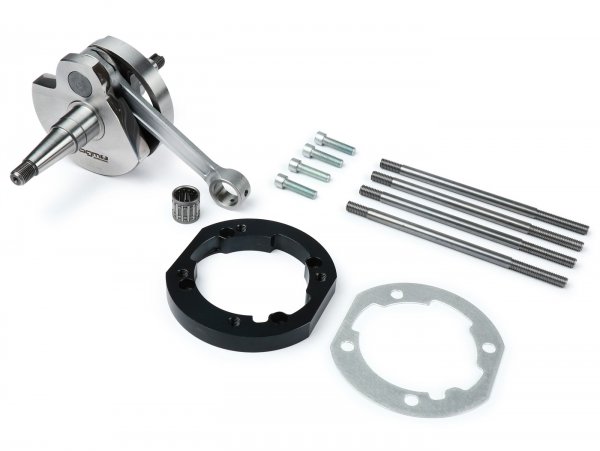Adapter plate set incl. crankshaft+cylinder -J&G 2% special by WT- for fitting Polini/Malossi 210 cylinders (Ø68.5mm) on engine cases PX80, PX125, PX150, Cosa125, Cosa150, Sprint Veloce150 (VLB1T 294260-), GTR125 (VNL2T 145901-), Super150 (VBC1T 4123
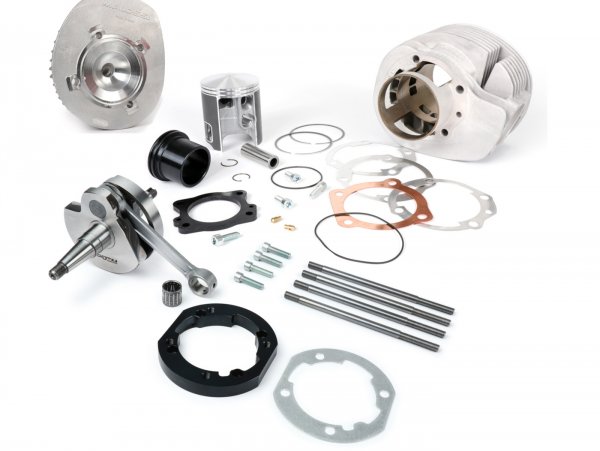







Description
Adapter plate set for conversion Malossi 210 Sport cylinder to engine case Vespa 80-150cc Largeframe.
Which rider of a Vespa with only 80cc or 125cc has not dreamed of experiencing the torque and sovereignty of a 200cc engine in his vehicle?
Powerfully and casually enjoying a mountain pass road without having to constantly use the lower gears?
More power and still have the full reliability of a 200cc engine?
All this is now possible based on an existing 80-150cc engine.
This set is based on the powerful Malossi 210 cylinder which is additionally combined with an extended stroke of 60mm. This gives a whopping 221ccm from which the engine can generate over 20hp and 22Nm and more without much effort.
The adapter set is suitable for the following vehicles:
Vespa Sprint Veloce150 (VLB1T 294260-;)
Vespa GTR125 (VNL2T 145901-)
Vespa Super150 (VBC1T 412374-)
Vespa TS125 (VNL3T 18139-)
Vespa PX80 (V8X1T), PX125 (VNX1T, VNX2T, ZAPM093), PX150 (VLX1T, ZAPM74, ZAPM094)
Vespa Cosa125 (VNR1T), Cosa150 (VLR1T)
LML125/150 2-stroke
Star/Stella 125/150 2-stroke
After an idea from Geoff (J&G 2% Vespa Tuning) as well as the technical implementation by W.T. we have subjected the set extensively and long a full stress test on the road and highway. The result is so convincing and reliable that we can now offer it as a set for the experienced screwdriver. It allows the use of a Malossi 210 Sport cylinder of the PX200/Rally/Cosa models on the engine cases of the Vespa Largeframe models from 1977 onwards. From this date onwards, the engine cases were converted to three overcurrent channels or to the crankshaft of the PX models (here, for vehicles before 1980, pay attention to the border chassis number). Generally the set fits on every engine with three overcurrent channels as well as the crankshaft type PX (recognizable by a pole wheel nut with M12 thread).
The adapter set includes:
1x cylinder Malossi 210cc incl, cylinder head (M3118591)
1x crankshaft BGM031125G 60mm stroke, connecting rod=125mm
1x adapter plate steel 14mm
1x spacer aluminum 1.5mm
4x stud bolt M8x165mm
4x screws M7x25mm
To convert this engine to 221cc you need beside the adapter-set further
Exhaust PX200
Longer gear reduction
Reinforced clutch
ADAPTER-SET
The conversion is based on a crankshaft with 20mm longer connecting rods (125mm instead of 105mm).
The solid CNC machined steel adapter plate bolts onto the engine case and accepts the studs for the PX200 cylinder. A 1.5mm thick aluminum gasket between the adapter plate and cylinder base seals the bolt holes and establishes the correct headroom.
MALOSSI SPORT
The adapter set SC80210 is designed for use with a Malossi Sport 210 cylinder. For this purpose, however, a spindling of the engine housing is mandatory because the cylinder base of the Malossi can not be shortened without loss of stability. In connection with an adjustment of the engine housing (inlet, overflow), the use of a SI24 carburetor as well as a good box (Polini, BBT V2 etc.) the engine performs permanently over 20HP/22NM with a very nice speed band and early high torque.
CURB SHAFT/INLET
The BGM crankshaft fits the engine case of the PX80-150cc models without modifications.
It has adjusted timing angles and harmonizes perfectly with the intake of the PX80-150cc models. Due to the lower pre-compression, the converted engines work more harmoniously with shorter intake angles. This means that the otherwise obligatory intake timing angles of 120° v.ot. to 70° n.ot. on sport engines are not mandatory for good performance. Tests on our engines have already shown very good results with 115°/60°.
CARBURETTOR
The standard carburetor (SI20/20D) can be kept as long as it is adapted by the jetting (use basic tuning of the PX200). However, more power and torque is provided by the carburetor of the PX200 models (SI24/24E). This also has directly the appropriate jetting. For the installation of the SI24 carburetor, the carburetor bowl should be adjusted in the passage (this is done quickly with a file or a Dremel/Proxxon tool).
TRANSMISSION
To make good use of the significantly higher as well as early torque, the reduction ratio should be lengthened:
80cc
The PX80 has its own secondary gearbox which is very short (originally the third gear of the PX200 is already longer than the fourth gear of the PX80). If the PX80 gearbox is to be retained, it can be used with an extra long reduction primary from e.g. BGM (25/62). This is used in conjunction with a stable COSA2 type clutch, e.g. a BGM Superstrong clutch. Alternatively, with minor modification work, a gearbox of the PX125/150 models can be used in the PX80 engine cases.
To do this, either the diameter of the auxiliary shaft axle on the alternator side is turned down or the engine housing is enlarged at the mounting for the auxiliary shaft (remove existing bushing).
125/150cc
For the 125/150cc engines, it is sufficient to change to the components of the 200cc engines on the primary side (primary wheel 64 (BGM) or 65, clutch pinion 23 or 24 (BGM) teeth).
CLUTCH
The 80-150cc models still use small clutches with 6-springs (108mm basket diameter) until 1998. These are permanently not up to the high torque of the 200cc engines. Therefore, this should be changed against a corresponding clutch of the 200cc models. A good possibility to change directly to the most modern clutch type of the COSA2 models. Here there is with the BGM Pro Superstrong a very high quality and stable clutch which is also easy to use.
IGNITION/POLER
These can be taken over from the donor engine without any problems. The ignition setting is according to the cylinder (18°-23° v.o.t.). Of course, other ignitions/pole wheels can be used for further tuning purposes. Our test engine ran with the pole wheel BGM Touring with 2300 grams which harmonizes very nicely with the performance characteristics of the 200cc engines.
CYLINDER HOOD
Due to the 15mm increase in the height of the cylinder, the cooling hood must also be extended accordingly. We simply used two hoods and cut off the lower third of one of them. This we have then connected with conventional sheet metal screws with the complete other hood. Of course, this can also be solved more nicely, but for us, this method has proven itself in everyday use. Alternatively, the hoods can be welded together with a soldering iron. Special plastic welding rods are also available for this purpose, but as a rule you can also use the remnants of the sacrificed hood as filling material.
EXHAUST
Due to the higher cylinder it can happen that the exhaust must be adjusted. Our experience has shown that the Polini box systems must be modified (twist the retaining tabs). The BGM Touring V2 systems (BGM1011TR2) however worked on our setup without any adjustments.
CYLINDER DISASSEMBLY
Due to the raised cylinder it is not possible to disassemble the cylinder head/cylinder while the engine is installed in the chassis. Alternatively, the stud bolts can be countered with our BGM72M7 tool and unscrewed from the adapter plate when the cylinder is mounted. This allows the head as well as the cylinder to be removed with the engine hanging in the frame. Normally this is a procedure that is not recommended as the threads in the soft aluminum of the engine case are not designed for frequent de/assembly. The original Piaggio studs have a thickened thread on the side where they are screwed into the engine case, which causes them to jam in the case.
Due to the other studs used by us and the adapter plate material made of steel, however, this is completely uncritical.
CONCLUSION
Anyone who enjoys engine work and is not afraid of small adjustments can build a powerful and durable engine with little effort without having to use a new engine housing.
+----------+
Manufacturer Information
Scooter Center GmbH
Kurt-Schumacher-Str. 1
50129 Bergheim-Glessen - Germany
https://www.scooter-center.com/
info@scooter-center.com
Responsible Person for the EU
Scooter Center GmbH
Kurt-Schumacher-Str. 1
50129 Bergheim-Glessen - Germany
https://www.scooter-center.com/
info@scooter-center.com
incl. VAT plus shipping costs
| Customers alternatively searched for | |
|---|---|
| Spacer | Zylinderfuß | Distanzdichtung | Distanz | Zylinderspacer | Kopfspacer | Fußspacer | Cylinder | Base | Cale D'Embase De Cylindre | Spacer Base Del Cilindro | Spacer Pié Del Cilindro | | |
Fits the following vehicles
- LML 125 (2 stroke)
- LML 125 Deluxe (2 stroke)
- LML 125 DLX (2 stroke)
- LML 125 Stella (2 stroke)
- LML 150 Belladonna (2 stroke)
- LML 150 Belladonna RV (2 stroke)
- LML 150 DLX (2 stroke)
- LML 150 Star (2 stroke)
- LML 150 Via Toscana (2 stroke)
- Vespa (Motovespa) Vespa 125 CL (engine 9CL)
- Vespa (Motovespa) Vespa 150 CL (engine 9NC)
- Vespa (Motovespa) PX 125 Iris (engine 99M)
- Vespa (Motovespa) PX 150 Iris (engine 75M)
- Vespa (Piaggio) P 80 X (V8X1T, -1983)
- Vespa (Piaggio) PX 80 E FL (V8X1T, 1983-)
- Vespa (Piaggio) PX 80 E FL Elestart (V8X1T, 1984-1990)
- Vespa (Piaggio) Vespa 150 Sprint Veloce (VLB1T)
- Vespa (Piaggio) Cosa 150 CL (VLR1T)
- Vespa (Piaggio) Cosa 150 CLX (VLR1T300)
- Vespa (Piaggio) Cosa 150 FL (VLR2T)
- Vespa (Piaggio) P 150 X (VLX1T, -1980)
- Vespa (Piaggio) PX 150 E FL (VLX1T, 1984-1997)
- Vespa (Piaggio) PX 150 E (VLX1T, 1981-1983)
- Vespa (Piaggio) Vespa 125 TS (VNL3T)
- Vespa (Piaggio) Cosa 125 CL (VNR1T)
- Vespa (Piaggio) Cosa 125 CLX (VNR1T300)
- Vespa (Piaggio) Cosa 125 CLX (VNR1T301)
- Vespa (Piaggio) P 125 X (VNX1T, -1983)
- Vespa (Piaggio) PX 125 E FL (VNX2T, 1984-1997)
- Vespa (Piaggio) PX 125 E FL (ZAPM09300, 1998-2000)
- Vespa (Piaggio) PX 125 E FL (ZAPM09302, 2001-)
- Vespa (Piaggio) PX 150 E FL (ZAPM09400, 1998-2000)
- Vespa (Piaggio) PX 150 E FL (ZAPM09401, 2001-)
Related items
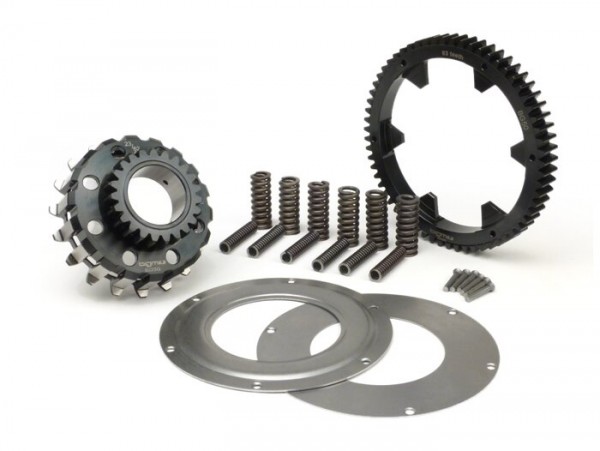
BGM6263K23

-
Available immediately (delivery time 1-3 working days*)23 teeth (for 62/63 straight teeth)
-
The item is ordered and will be in stock soon24 teeth (for 62/63 straight teeth)
-
Available immediately (delivery time 1-3 working days*)25 teeth (62/63 straight teeth)
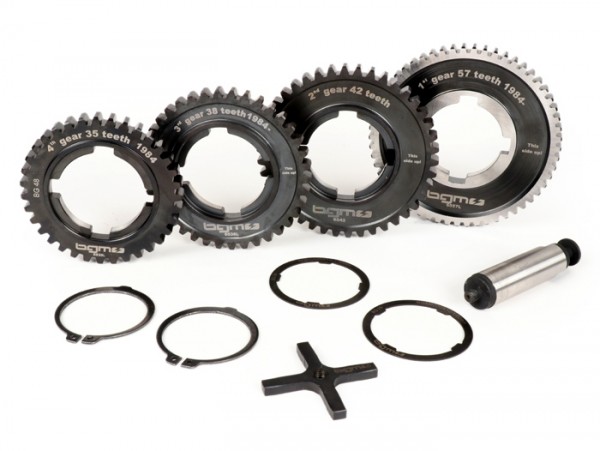
BGM6935L

-
Available immediately (delivery time 1-3 working days*)35 teeth (standard 200c)
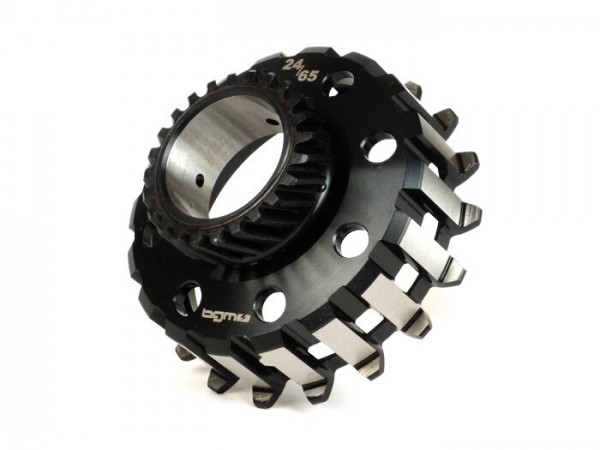
BGM6524S

-
Available immediately (delivery time 1-3 working days*)22 teeth (for 64/65 teeth)
-
Available immediately (delivery time 1-3 working days*)23 teeth (for 64/65 teeth)
-
Available immediately (delivery time 1-3 working days*)24 teeth (for 64/65 teeth)
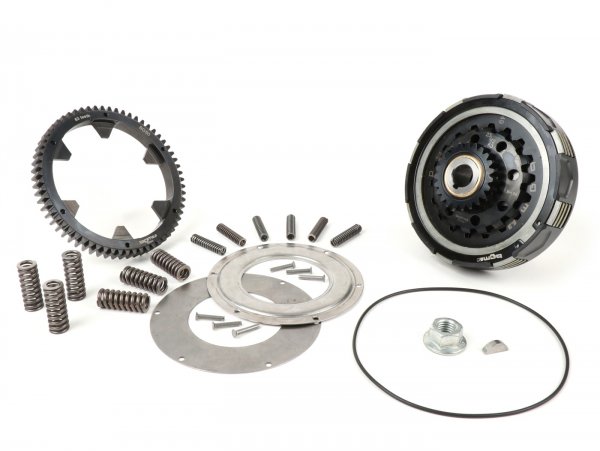
BGM8623KT63

-
Available immediately (delivery time 1-3 working days*)23 teeth (for 62/63 straight teeth)
-
The item is ordered and will be in stock soon24 teeth (for 62/63 straight teeth)
-
Available immediately (delivery time 1-3 working days*)25 teeth (62/63 straight teeth)











